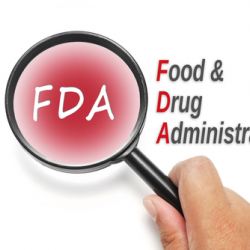Direct to consumer (DTC) advertising of prescription drugs have been around in both print and television since the mid-80's. It is a considerable business expense — in 2015 roughly $5.5 billion was spent on brand drug advertising along with a paltry half-billion on generics. Within a very short time after the airing of the first pharmaceutical ad, the FDA required communication of side effects and other information. Over the ensuing 30 years compromises by both manufacturers and the FDA result in the ads we see today. Here is the requirement:
Ads must also “present a fair balance between information relating to side effects and contraindications and effectiveness. . . .” An ad must present true information relating to side effects and contraindications in comparable depth and detail with the claims for effectiveness or safety
The regulation itself and the resulting communication, really a litany, is the work of attorneys rather than physicians. I mean, do you really have to make sure your doctor knows you had a transplant? If my doctor didn’t know that type of information, I would be seeing another doctor.
This week, the FDA is soliciting in the Federal Registry for an institution to study those long litanies, more specifically, whether the repetition of these effects causes us to tune out. Are we being, and this is their word, over-warned? Detailing too many risks may result in missing the important stuff or discounting it all. And we all tune out the warnings in commercials we see for the umpteenth time. But as the FDA goes on to state:
Although researchers caution against habituation and over warning, there appears to be little empirical research for the logical supposition that seeing repeated warnings will lead to increased selectivity and reduced attention by recipients over time.
Let me declare my conflict of thought. I do not see the value of DTC advertising to improving your health although I realize that it increases your desire for the latest and perhaps greatest. (Similarly, I do not see the value in hospital’s advertising themselves, for the majority of patients the hospital is the one where their doctor practices or the nearest Emergency Department.) But having made my declaration, I would agree that understanding the efficacy of these warnings is appropriate. Unfortunately, that is not what the FDA is proposing to study. They want to measure our eye movements when looking at print ads. Now, eye movement will accurately identify what we look at, but does not necessarily measure what we attend to and certainly does not measure what information we have incorporated into our thinking. To close that gap participants will complete questionnaires on their perception and recall of risks and efficacy. And I think that will answer the question of what we attend to. But this does not respond to the real question, what has the patient learned from the advertisement about their healthcare needs?

